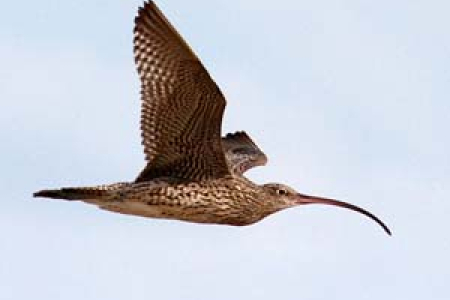Critically endangered curlews find safe haven
A bird that is critically endangered around Australia is defying the odds with research showing that it is being found in increasing numbers in and around Darwin Harbour in the Northern Territory.
A PhD candidate from the Research Institute for the Environment and Livelihoods at Charles Darwin University, Amanda Lilleyman recently published an article on the population trends of the critically endangered Eastern Curlew in Darwin Harbour, Northern Territory. As lead researcher, she will present her findings at the Society for Conservation Biology Oceania Conference in Brisbane 3-10 July.
“The Eastern Curlew was recently uplisted to critically endangered conservation status due to ongoing declines in numbers observed along the East Asian-Australasian Flyway,” Amanda said.
“This species of migratory shorebird breeds in Siberia and northern China and migrates through the Yellow Sea region every year to arrive in Australia for the non-breeding season.”
She said that loss of habitat due to reclamation of tidal mudflats in the Yellow Sea region was considered the major driver of population declines in many species of migratory shorebirds, including the Eastern Curlew.
“Researchers in Australia have been reporting declines in this species for the past 30 years and expect some localised extinctions if this rate of loss continues.”
But she said the Northern Territory appeared to be bucking this trend with the numbers for Eastern Curlews in Darwin Harbour showing an increase at two sites that have been monitored as part of her PhD research.
“We found that the artificial roost site at East Arm Wharf in Darwin Harbour provided safe roosting options for the birds, and dog regulation and zoning of the beach at Lee Point in Darwin’s northern suburbs, offered protection for the birds to feed,” Amanda said.
“This increase in the number of birds using these sites suggests that managers can introduce strategies that provide safe and undisturbed roosting and feeding sites to allow shorebirds to exist in a developed harbour.”
Amanda will present the research paper “Trends in relative abundance of the Eastern Curlew (Numenius madagascariensis) in Darwin, Northern Territory” at the Society for Conservation Biology Oceania Conference in Brisbane 3-10 July.
